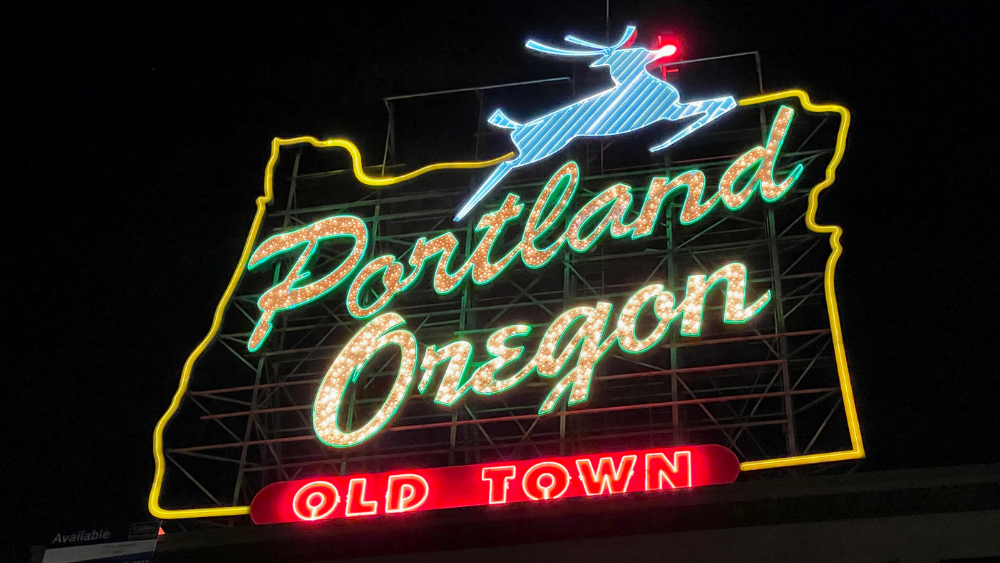Neon signs evoke a vintage sort of charm. Their foremost purpose is a practical one, providing need-to-know information for passersby. And yet the iconic glow and vivid color they cast can pierce the darkest, stormiest night, granting them a lighthouse-like power that seems to say “come in, take a load off.”
In the US, the neon heyday stretched from about the 1920s to the 1950s; Los Angeles and New York’s Times Square were among the earliest domestic destinations to adopt the French invention. While many of the most iconic vintage neon signs can now be found in Las Vegas, Portland’s unique collection of neon is nothing to scoff at.
Turn off the lights and step back in time with us as we tour the Rose City’s neon scene.

Portland Commissioner Randy Leonard spearheaded the installation of the neon rose to preserve the building it stands atop, which was designed by local architect John Yeon.
Photo by Another Believer
Portland Rose Festival Foundation, 1020 SW Naito Pkwy.
This small building in Tom McCall Waterfront Park once housed a restaurant before becoming the headquarters of the organization behind the Portland Rose Festival. The neon red rose atop its roof was erected in 2009.
White Stag sign, 70 NW Couch St.
In 1940, a beet sugar plant called White Satin Sugar forever changed downtown Portland’s skyline by installing an animated 50-ft-tall sign featuring 1,100 feet of neon tubing and 500 incandescent lamps. It was altered to advertise the White Stag company in 1957; “Made in Oregon” lettering replaced the company’s name in 1997. The city of Portland acquired it in 2010 and changed it to what we see today.

The western outfitter’s presence in downtown Portland hints at a side to the city’s character that rode into the sunset long ago.
Photo by Tony Webster
Portland Outdoor Store, 304 SW Thirrd Ave.
Customers from around the world have shopped for cowboy boots, hats, and saddles (and enjoyed complimentary whiffs of leather) at this business since 1914. The storefront added its iconic neon sign around 1946 or 1947.
Miller Paint, 317 SE Grand Ave.
Ernest Carl Bernard Mueller left his homeland of Germany in 1888, arriving in Portland a year later. He founded a paint and wallpaper business and its flagship location opened on Southeast Grand Avenue in 1926. A 10-ft-tall neon sign featuring a windmill went up in 1938; it was restored when the company celebrated 130 years.












